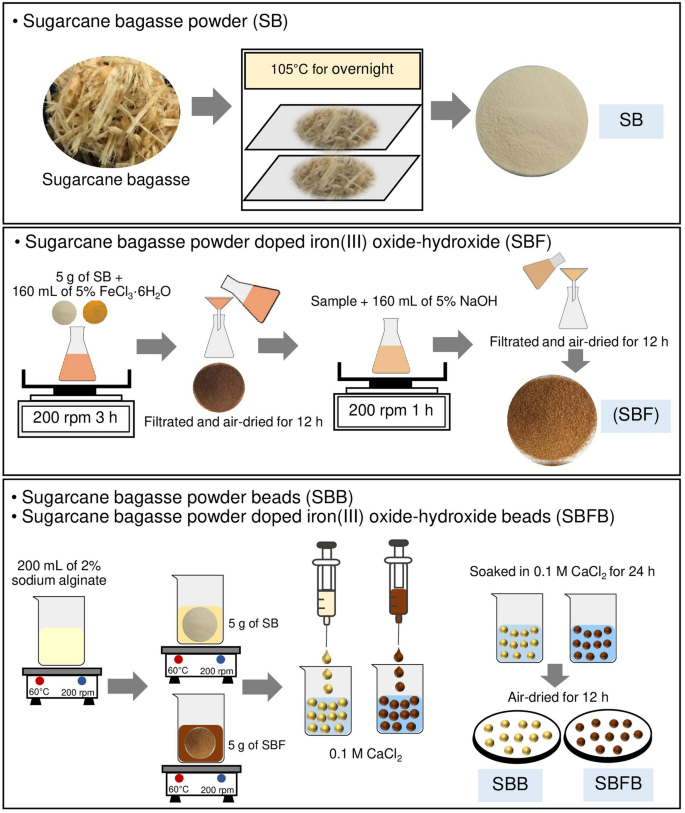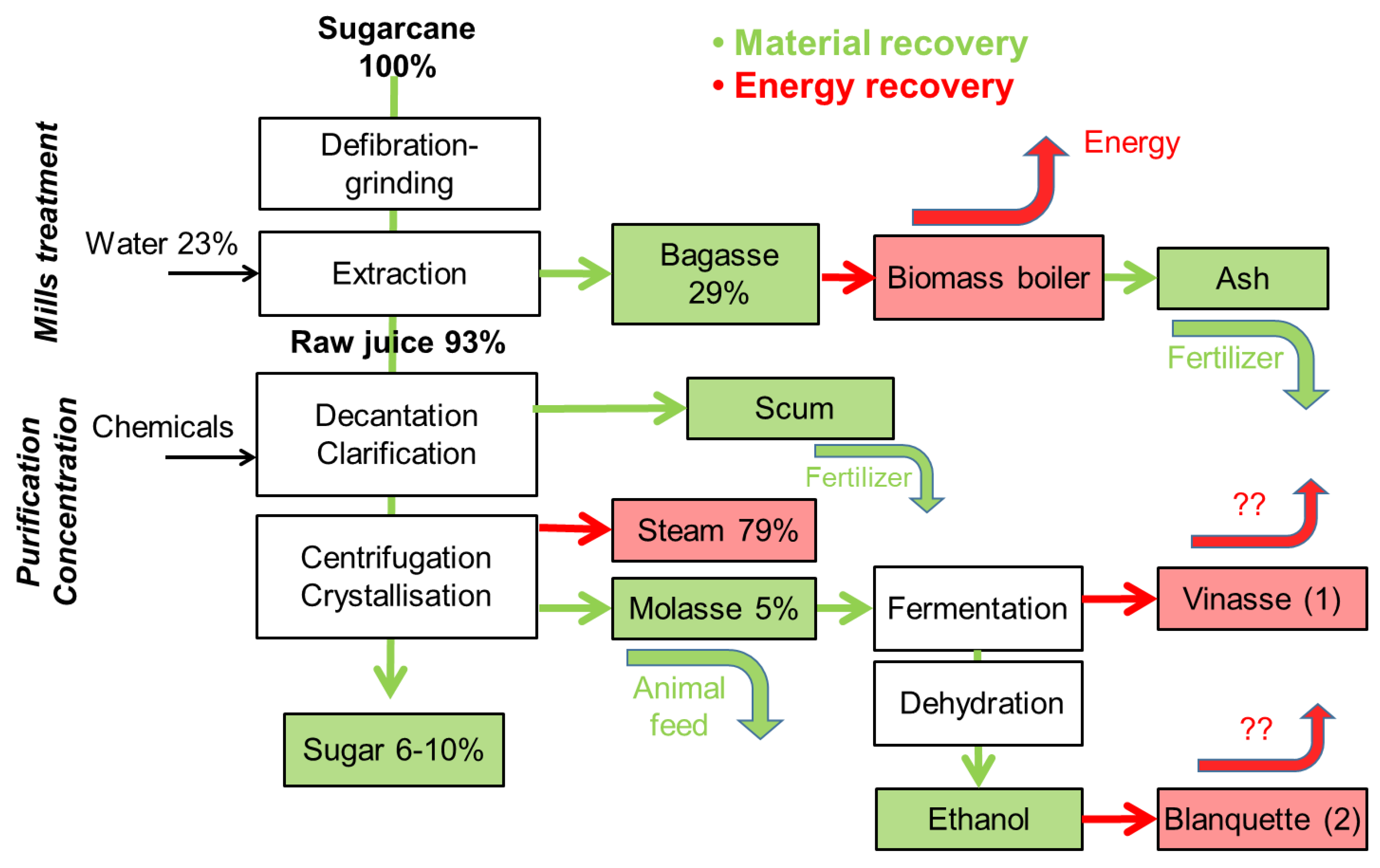Exploring the Environmental Impact of Products From Sugarcane
Exploring the Environmental Impact of Products From Sugarcane
Blog Article
Opening the Possible of Products From Sugarcane: a Comprehensive Guide
The capacity of sugarcane prolongs far beyond its traditional use for sugar manufacturing. This overview explores the multifaceted applications of sugarcane, from energy and naturally degradable materials to health products. By analyzing its journey from field to manufacturing facility, it exposes exactly how lasting methods can transform waste right into important resources. As markets seek eco-friendly remedies, the question remains: exactly how can these technologies reshape our approach to agriculture and manufacturing?

The Trip of Sugarcane: From Field to Manufacturing facility
Sugarcane undergoes an interesting makeover as it travels from lavish areas to dynamic factories. In the fields, the tall, environment-friendly stalks are collected, usually by mechanical ways or manual work. Once reduced, the sugarcane is promptly moved to refining facilities to assure optimum quality. At the factory, the first action includes crushing the walking cane to extract the wonderful juice, which consists of sucrose. Products From Sugarcane. This juice is after that filtered and made clear, getting rid of contaminations. Following this, it goes through dissipation to focus the sugar material, leading to condensation. The resulting sugar crystals are separated from the staying molasses with centrifugation. Lastly, the sugar is dried out and packaged for circulation. Throughout this journey, keeping high quality and efficiency is essential, as the techniques employed directly impact the item's final quality. This change not just highlights the farming importance of sugarcane but additionally its significant role in the international economic situation
Sugar and Its By-products: More Than Just Sweet taste
The transformation of sugarcane into refined sugar opens up the door to a wide variety of items and applications that expand past mere sweet taste. Sugar and its by-products, such as molasses, brownish sugar, and glucose, play critical roles in various markets, including food, drugs, and cosmetics. In the food field, these components enhance tastes, enhance appearance, and function as preservatives.Molasses, a by-product of sugar manufacturing, is abundant in minerals and vitamins, making it a valuable ingredient in organic food and animal feed. Sugar, a basic sugar originated from sugarcane, acts as a considerable power resource in sports nourishment and is essential in the manufacturing of confectionery. In addition, sugar by-products are utilized in fermentation procedures, contributing to the manufacture of liquors and various other microbial products. In general, the versatility of sugar and its derivatives highlights their significance beyond simple sweetness in everyday life.
Biofuels: Harnessing Power From Sugarcane

A substantial section of global biofuel production now counts on sugarcane, recognized for its high energy return and effectiveness in converting sunshine right into biomass. This exotic crop functions as a primary source for ethanol, a sustainable gas that can change gas in vehicles. Sugarcane's capacity to produce even more ethanol per hectare than other feedstocks, such as corn, adds to its raising appeal amongst biofuel producers.The fermentation procedure of sugarcane juice or molasses generates ethanol, which can be blended with nonrenewable fuel sources to reduce greenhouse gas discharges. In addition, by using the recurring bagasse from sugarcane processing, power can be created via burning, additional enhancing the sustainability of biofuel production. As nations look for to reduce climate modification impacts, sugarcane biofuels supply an appealing option, strengthening power safety and promoting agricultural sustainability while sustaining rural economic climates.
Eco-friendly Plastics: The Sustainable Alternative
Exactly how can sectors shift to even more sustainable practices when faced with expanding plastic pollution? One encouraging service exists in eco-friendly plastics originated from sugarcane. Unlike standard petroleum-based plastics, these bioplastics supply an environmentally friendly option that can greatly minimize ecological effect. Made from renewable energies, sugarcane-based plastics break down more swiftly in various conditions, lessening garbage dump buildup and marine debris.The manufacturing of eco-friendly plastics not just addresses waste management difficulties however also aligns with the increasing customer need for sustainable products. Industries embracing these products can improve their brand picture while adding to a round economy. Additionally, the adjustment to eco-friendly options motivates advancement and investment in new innovations, cultivating a greener sector landscape.As much more firms acknowledge the advantages of sugarcane-derived plastics, the capacity for widespread fostering increases, paving the means for an extra sustainable future in product packaging and item design.
Pet Feed and Fertilizers: Utilizing By-products
The byproducts of sugarcane processing hold considerable possibility for both pet nutrition and natural fertilizers. These byproducts can be integrated into animal feed, providing necessary nutrients while lowering waste. Additionally, they can work as efficient natural plant food alternatives, enhancing dirt health and wellness and advertising lasting agricultural methods.
By-products in Pet Nutrition
While sugarcane is primarily valued for its sucrose web content, its by-products play a vital function in pet nutrition, especially in the kind of animal feed and plant foods. The coarse residue called bagasse, created throughout the removal of juice, acts as a review beneficial resource of roughage for animals. This high-fiber material improves digestion and promotes general wellness in ruminants. Additionally, molasses, a by-product of sugar refining, is abundant in energy and can be made use of to supplement animal diets, boosting palatability and nutritional value. Vinasse, a fluid result from ethanol manufacturing, includes important nutrients and can be utilized as a feed additive. On the whole, sugarcane by-products contribute greatly to sustainable animal nourishment methods.
Organic Plant Food Options
Making use of sugarcane byproducts prolongs past animal nourishment to include natural fertilizer choices that benefit agricultural practices. The fibrous residues, such as bagasse and filter cake, serve as reliable organic fertilizers, enriching soil health and boosting crop returns. These materials are abundant in nutrients, consisting of nitrogen, phosphorus, and potassium, crucial for plant growth. When decayed, they boost soil framework, water retention, and microbial task, fostering a lasting farming ecosystem. Furthermore, making use of sugarcane results for fertilizing lowers dependence on artificial plant foods, advertising ecologically friendly agricultural approaches. By recycling these by-products, farmers can add to a round economic climate while optimizing their productivity and decreasing waste. This approach exhibits ingenious techniques in sustainable farming, leveraging sugarcane's complete capacity.
Health and Wellness: Nutritional Advantages of Sugarcane
Various studies highlight the dietary advantages of sugarcane, making it a valuable addition to a well balanced diet. Rich in necessary nutrients, sugarcane includes considerable amounts of carbohydrates, minerals, and vitamins, specifically vitamin Potassium, c, and calcium. These elements contribute to overall wellness, sustaining immune feature and bone strength.Moreover, sugarcane is a natural source of antioxidants, which aid battle oxidative stress and anxiety and swelling in the body. Its high fiber content help in food digestion, advertising digestive tract wellness and stopping constipation. Additionally, sugarcane juice has been connected to hydration and power replenishment, making it an excellent option for athletes or those involving in difficult activities.Furthermore, the glycemic index of sugarcane is relatively low, permitting an extra progressive release of power, which may be helpful for people managing blood sugar degrees. Generally, including sugarcane into one's diet regimen can offer a revitalizing and nutritious alternative for health-conscious people.
Technologies in Sugarcane Products: Future Trends and Opportunities
What developments exist ahead for sugarcane products as markets seek to improve sustainability and consumer this website appeal? The future of sugarcane items is poised for significant advancements, driven by the need for eco-friendly options. Developments in bio-based product packaging, stemmed from sugarcane, are acquiring traction, offering a sustainable replacement for typical plastics. In addition, the expedition of sugarcane's bioactive substances is likely to bring about brand-new health supplements find more information and useful foods, maximizing its natural benefits.Research into fermentation processes may generate unique biofuels, better diversifying sugarcane's energy. Moreover, the growth of genetically customized sugarcane varieties promises boosted returns and resistance to pests, consequently supporting sustainable farming practices. As consumers become a lot more ecologically conscious, the combination of transparency in sourcing and production methods will additionally play an important duty fit the future of sugarcane items. Eventually, these technologies can redefine sugarcane's placement in worldwide markets.
Frequently Asked Questions
What Are the Environmental Effects of Sugarcane Farming?
The ecological effects of sugarcane farming include logging, loss of biodiversity, dirt degradation, and water air pollution - Products From Sugarcane. In addition, too much chemical and fertilizer use can hurt environments, while monoculture practices might result in decreased durability versus environment change

How Is Sugarcane Processed Into Different Products?
Sugarcane processing entails harvesting, crushing, and drawing out juice, which is after that cleared up and focused. The resulting syrup can be fermented for ethanol or taken shape for sugar, while fibers are utilized for bioenergy and various other products.

Are There Any Type Of Wellness Threats Connected With Sugarcane Usage?
The concern of health and wellness risks connected with sugarcane usage highlights issues such as too much sugar consumption, potential allergies, and gastrointestinal concerns. Moderation is essential to alleviate these threats while appreciating its nutritional benefits.
What Are the Economic Benefits of Sugarcane Cultivation?
The economic benefits of sugarcane farming consist of job development, enhanced farming efficiency, and contributions to regional economies. Furthermore, it sustains renewable resource manufacturing and offers different spin-offs that can enhance profitability within varied markets.
Just How Does Sugarcane Contrast to Various Other Renewable Resources?
Sugarcane, as a renewable energy, demonstrates higher efficiency in biomass production contrasted to numerous choices. Its convenience enables for various results, contributing notably to sustainable practices, financial growth, and lowering reliance on nonrenewable fuel sources. Glucose, a basic sugar obtained from sugarcane, offers as a significant power resource in sports nourishment and is important in the production of confectionery. Sugarcane's ability to generate even more ethanol per hectare than other feedstocks, such as corn, contributes to its increasing popularity among biofuel producers.The fermentation procedure of sugarcane juice or molasses generates ethanol, which can be mixed with fossil fuels to decrease greenhouse gas exhausts. In addition, sugarcane juice has been linked to hydration and energy replenishment, making it an outstanding choice for athletes or those engaging in exhausting activities.Furthermore, the glycemic index of sugarcane is fairly low, permitting for an extra steady launch of energy, which might be useful for individuals handling blood sugar levels. In addition, the exploration of sugarcane's bioactive compounds is most likely to lead to new wellness supplements and useful foods, capitalizing on its all-natural benefits.Research into fermentation processes may yield novel biofuels, even more expanding sugarcane's utility. The question of health and wellness dangers connected with sugarcane usage highlights concerns such as extreme sugar intake, potential allergies, and stomach concerns.
Report this page